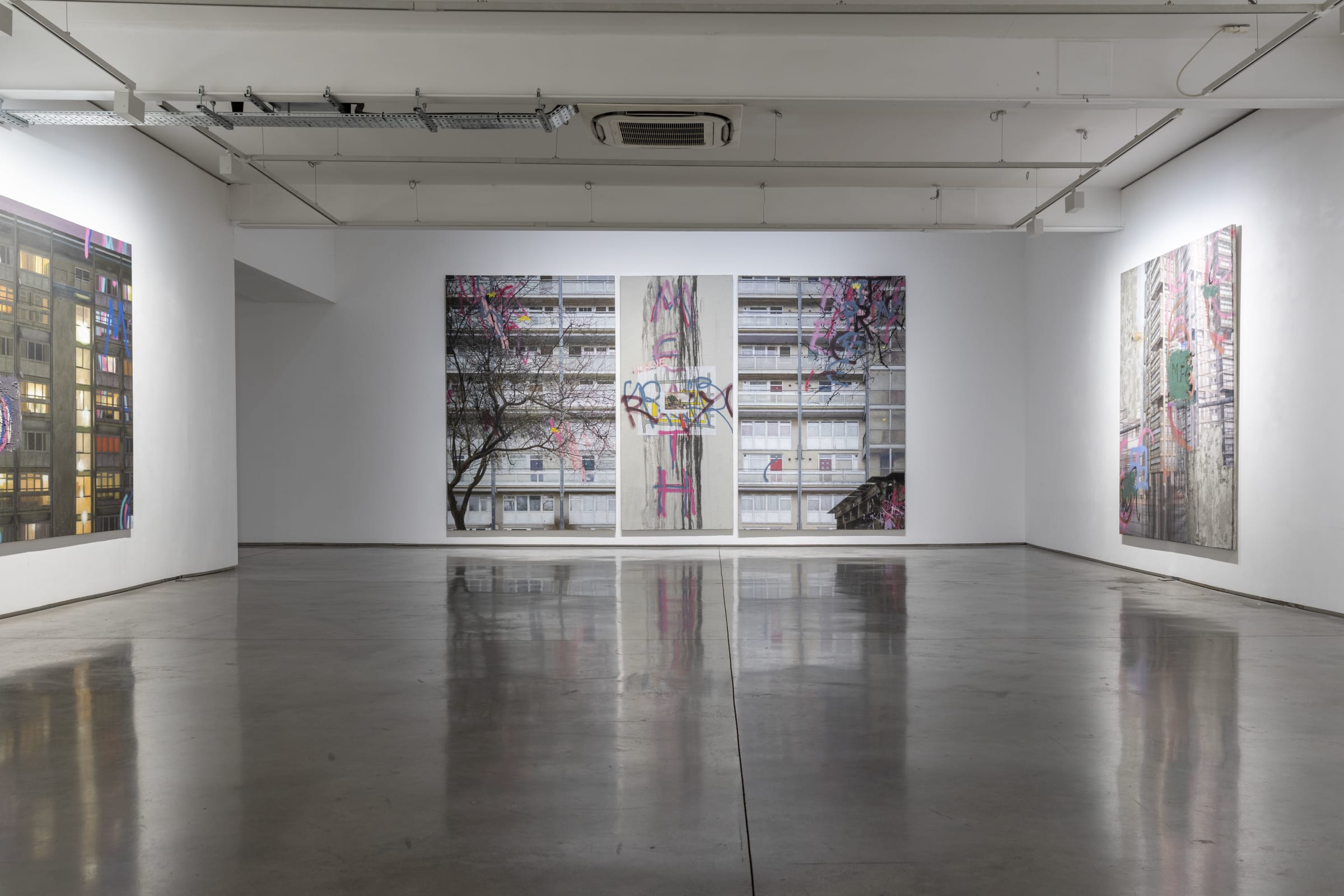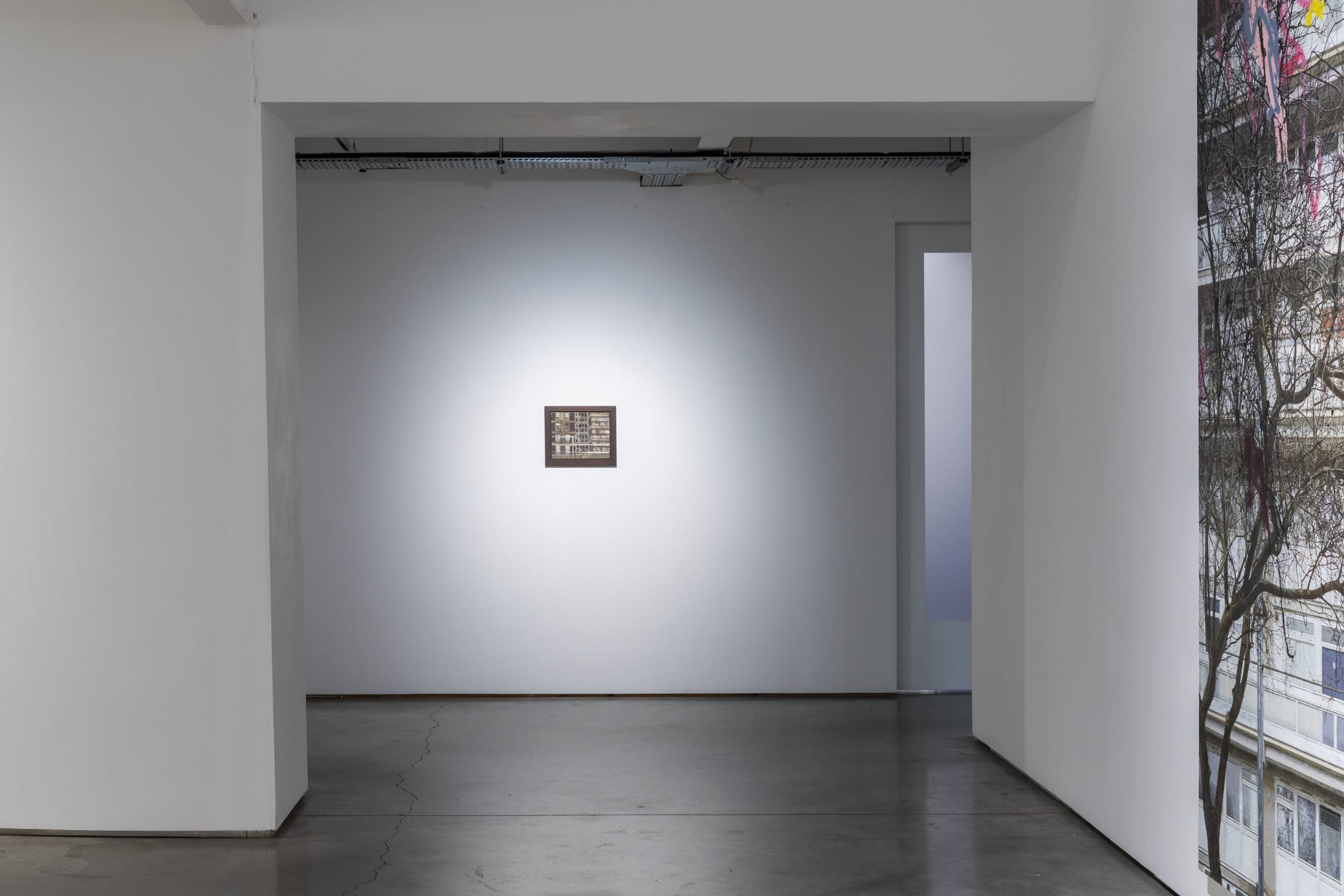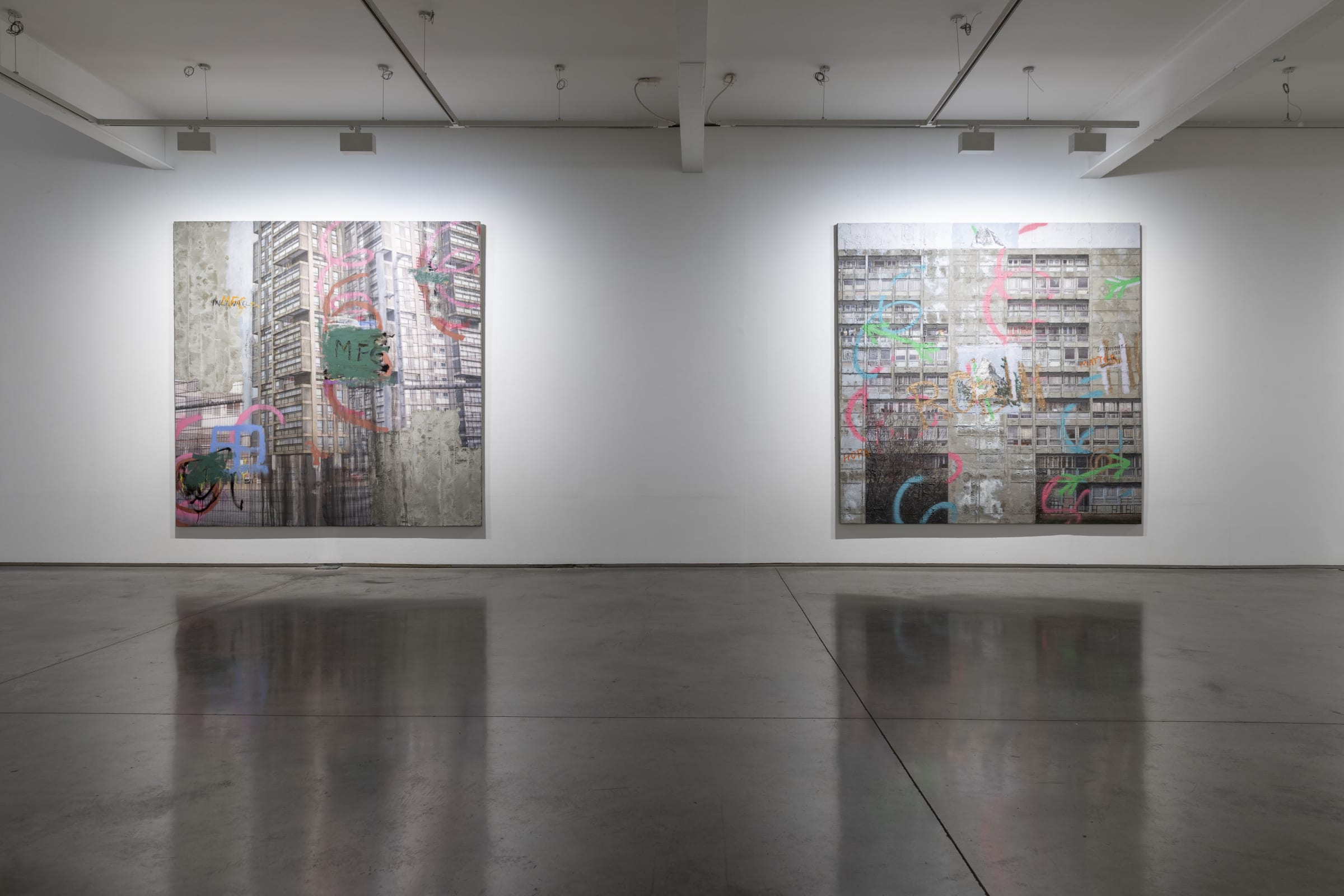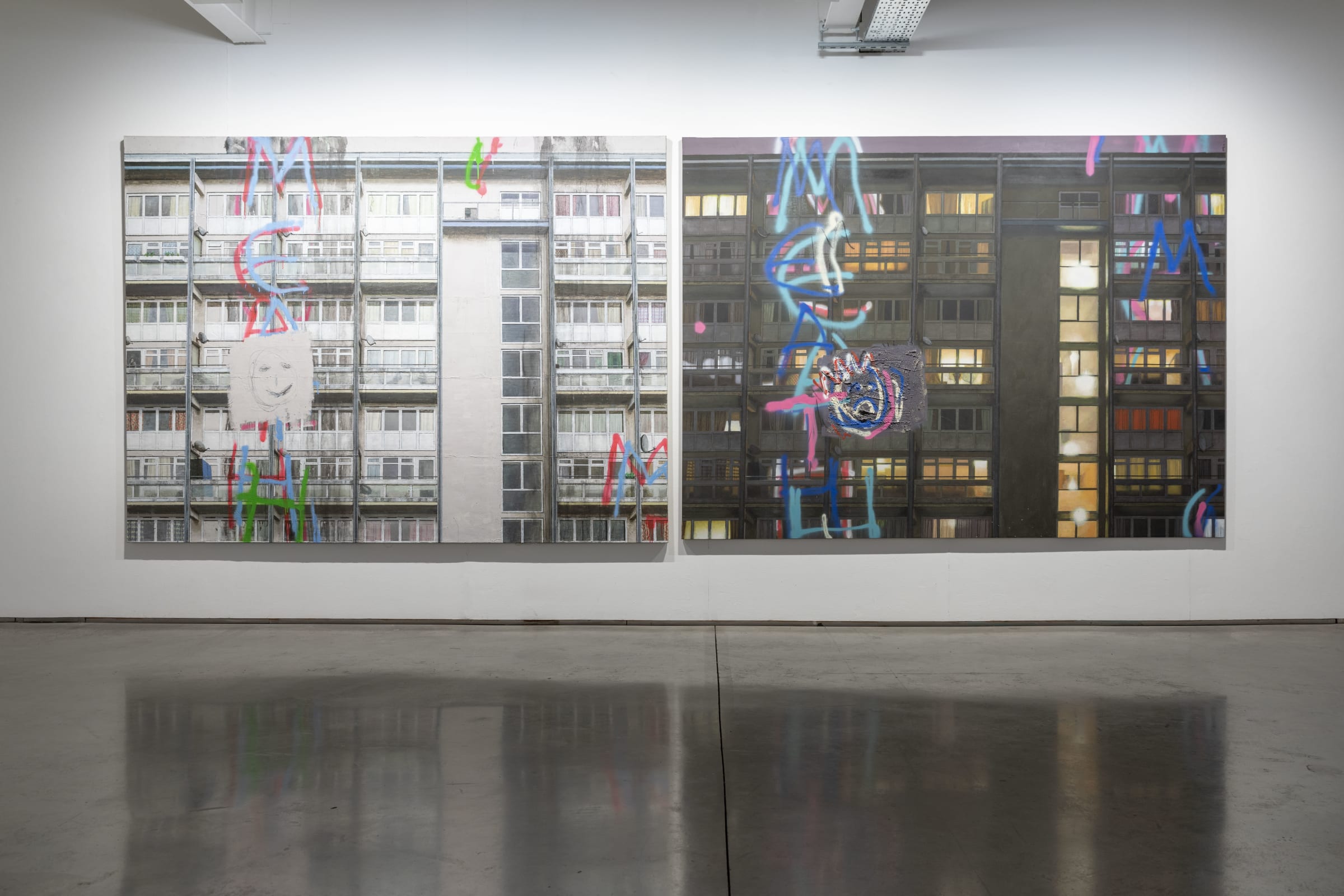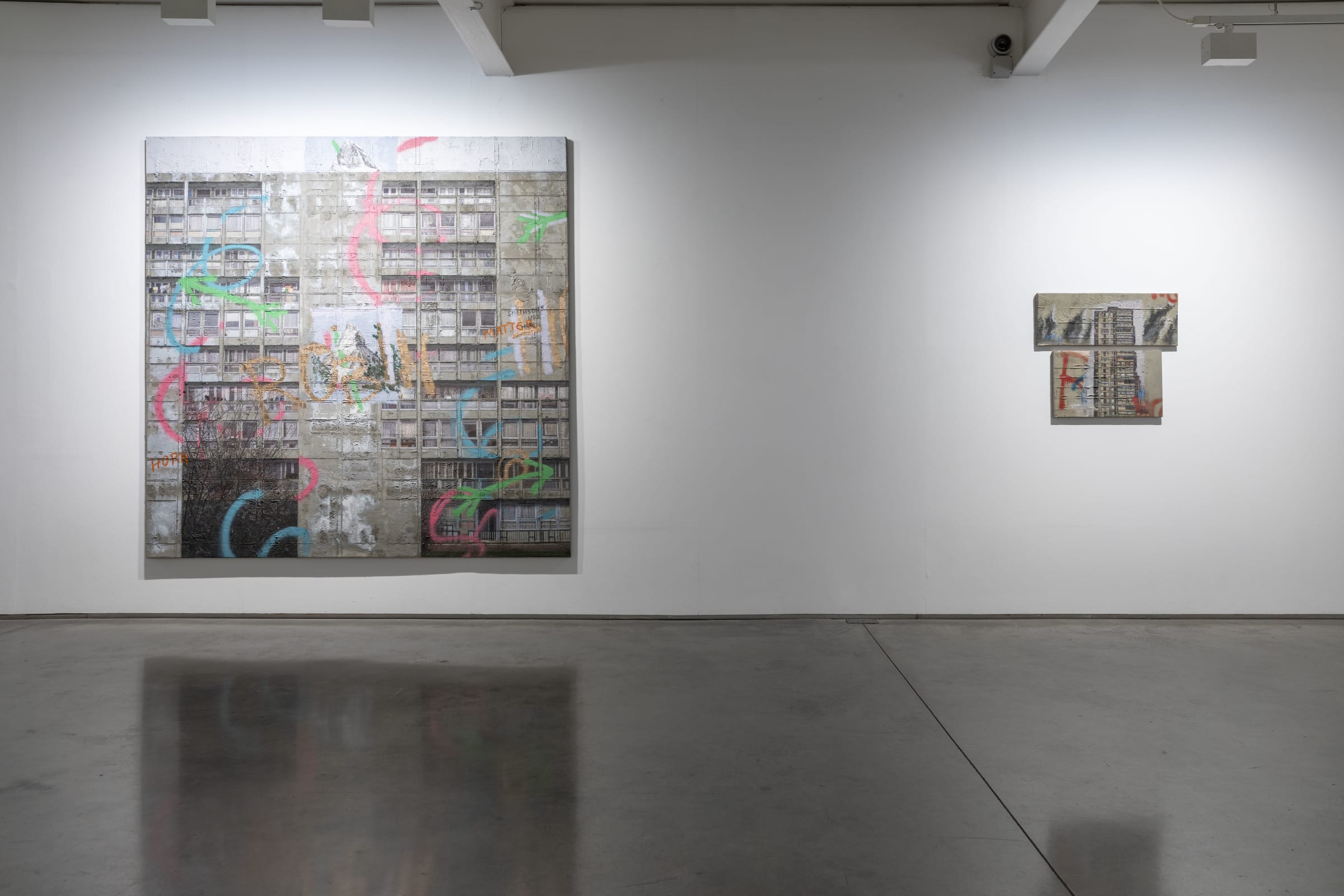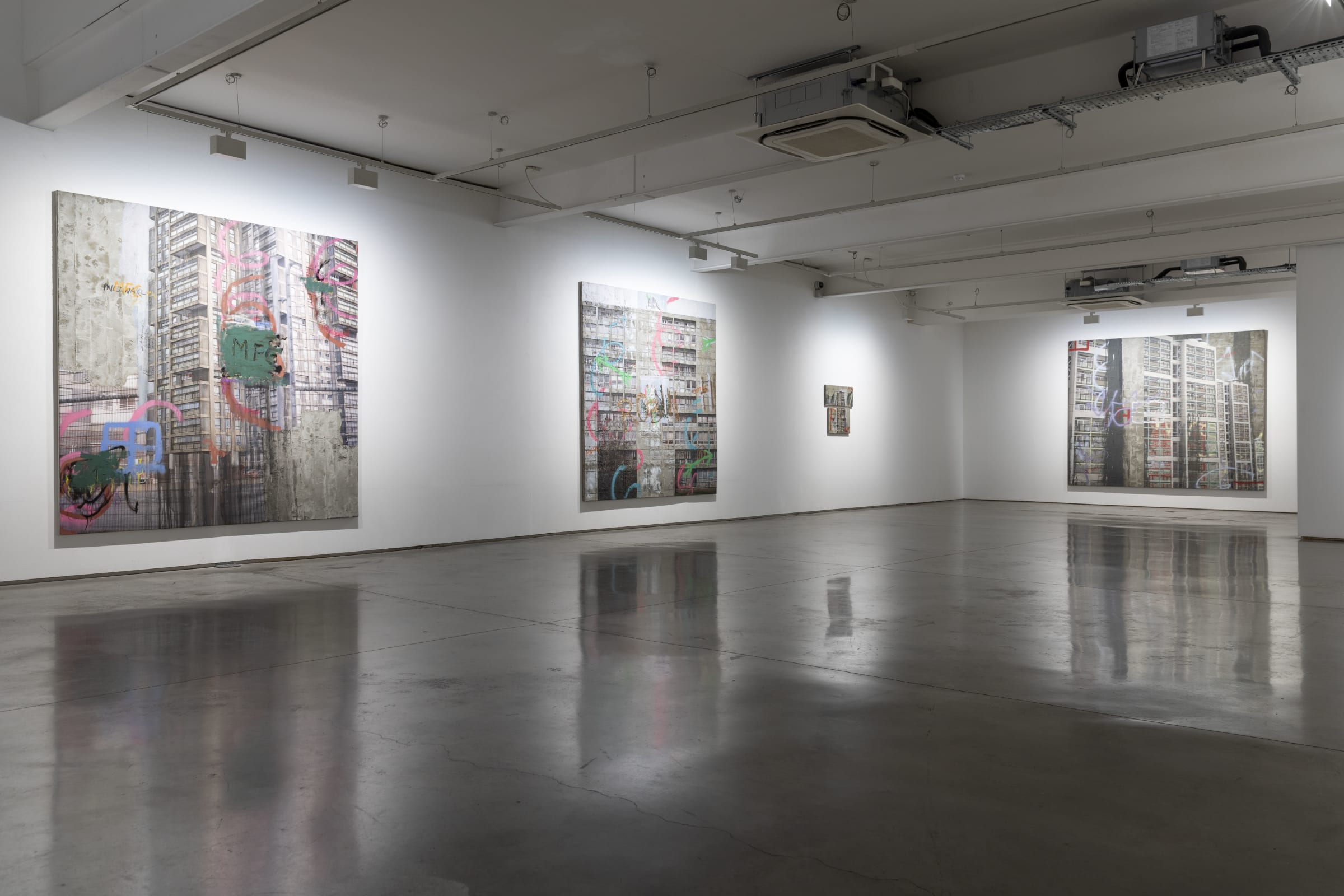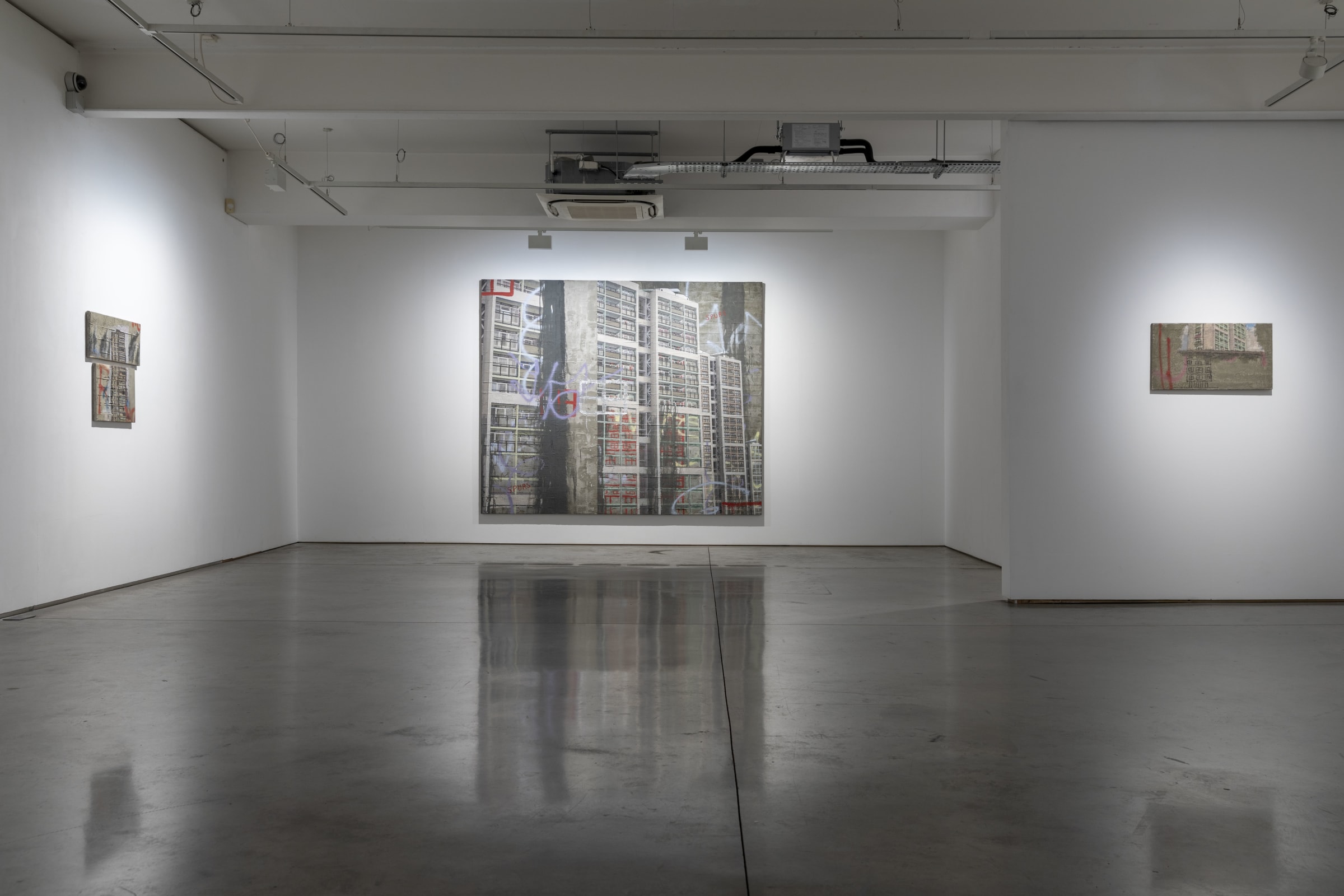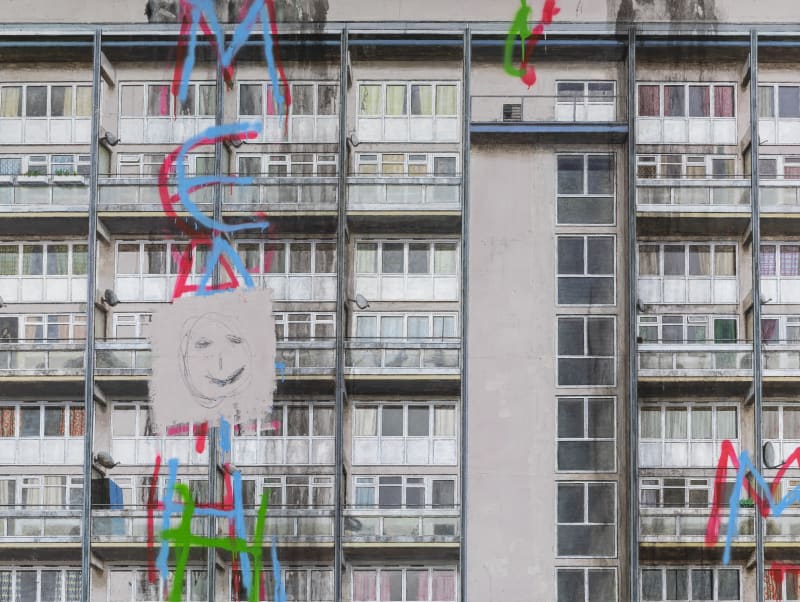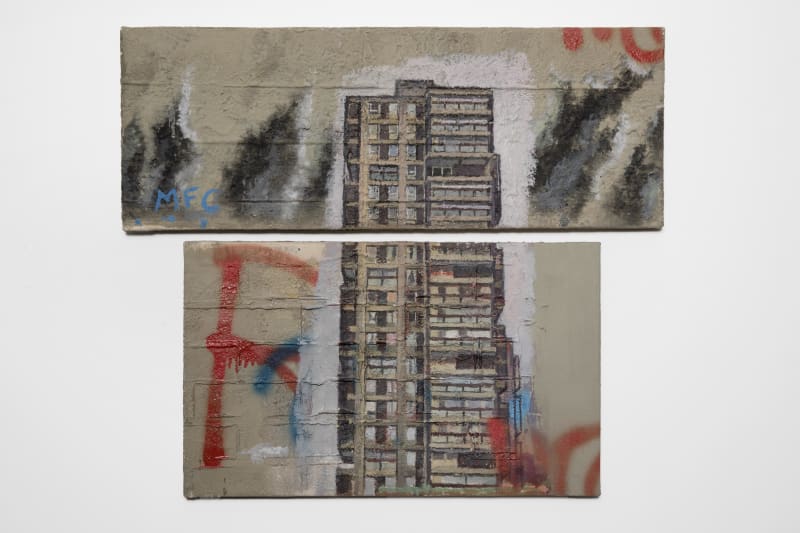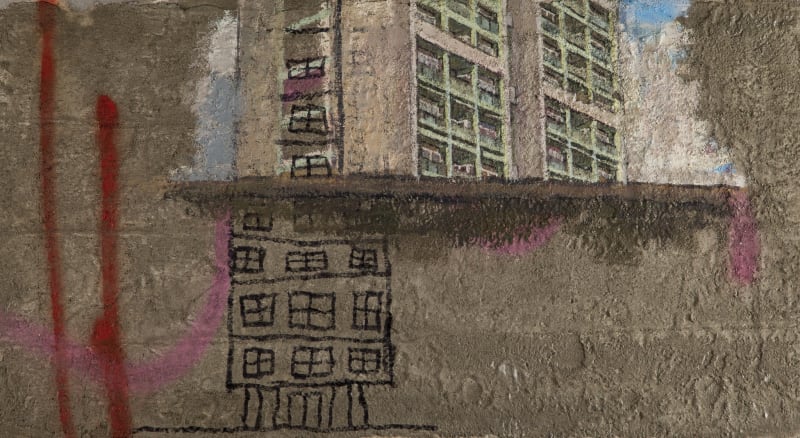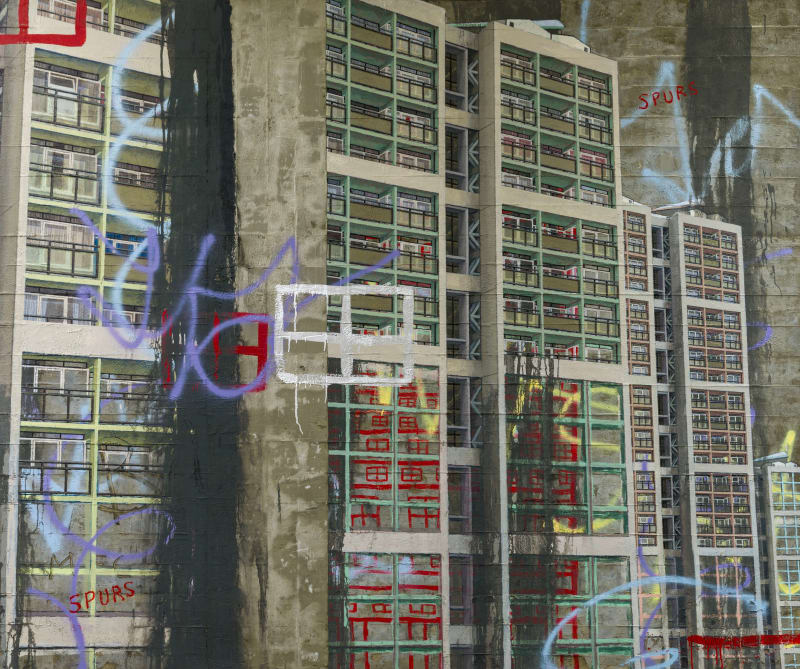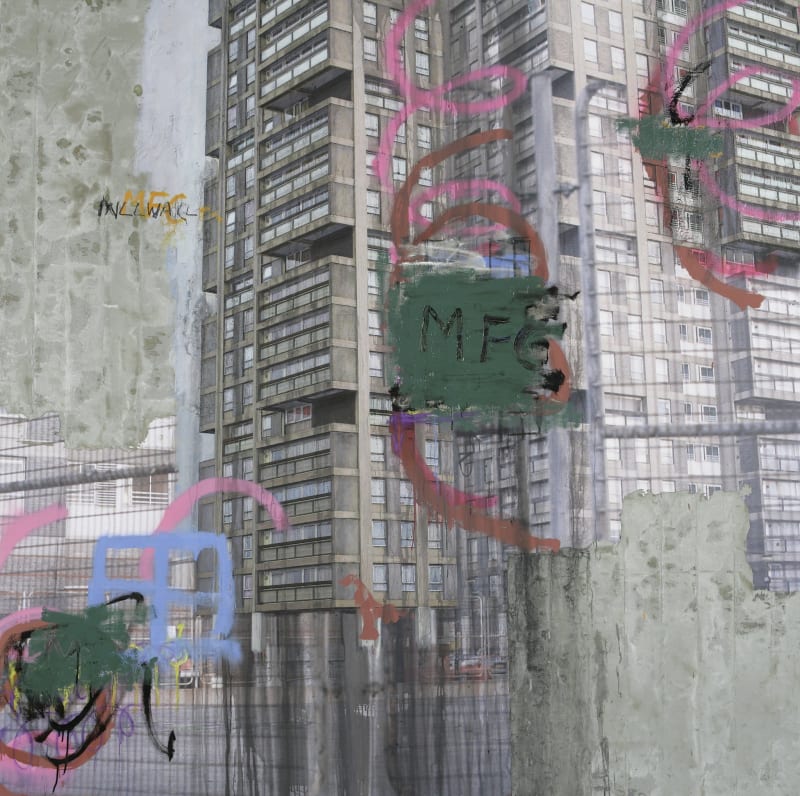Overview
Celebrating David Hepher's 90th birthday, this presentation surveys the artist's renowned focus on London's iconic tower blocks, as he views himself as fundamentally a landscape painter, stating, ‘I just paint what is around me.’
For over six decades British artist David Hepher (b. 1935) has centred his work on the urban landscapes of south London. Exploring the scale and 'austere grandeur’ of the expansive modern social housing estates built in the 1960s and 70s, Hepher was attracted to the formal beauty of their grid-like structures and by the physical and emotional traces of their many inhabitants. His multivalent work has both celebrated and mourned modernism in modes that are futuristic and nostalgic, utopian and entropic.
Perceived as both commemorating and grieving modernism, the tower blocks of Britain are large high-rise dwellings built within the optimistic decades of the 1950s and 60s, symbolising a contemporary and progressivist ideal. In the 1970s, the enthusiasm for the buildings had deteriorated, due to the structural degradation, vandalism, and depilation of community, essential to narratives explored by Hepher.
On both small and monumental scales and often across multiple panels, Hepher replicates a builder’s application of textured and deteriorated facades, pushing the paintings to the brink of abstraction. Pours of paint, drips. staining and graffiti disrupt the ordered geometry of the structures and reflect increasing physical and social changes of the buildings themselves.
Exhibition video



ABOUT DAVID HEPHER (b 1935)
Born in Surrey, Hepher studied at Camberwell School of Art and the Slade. He was a senior lecturer in painting at Chelsea School of Art from 1981 - 1990 and subsequently became professor and head of Undergraduate Painting at the Slade. His work is in public collections including the Tate, the Museum of London, The Arts Council, British Council, Museum Boymans-van Beuningen, Rotterdam and the Victoria and Albert Museum in London.
